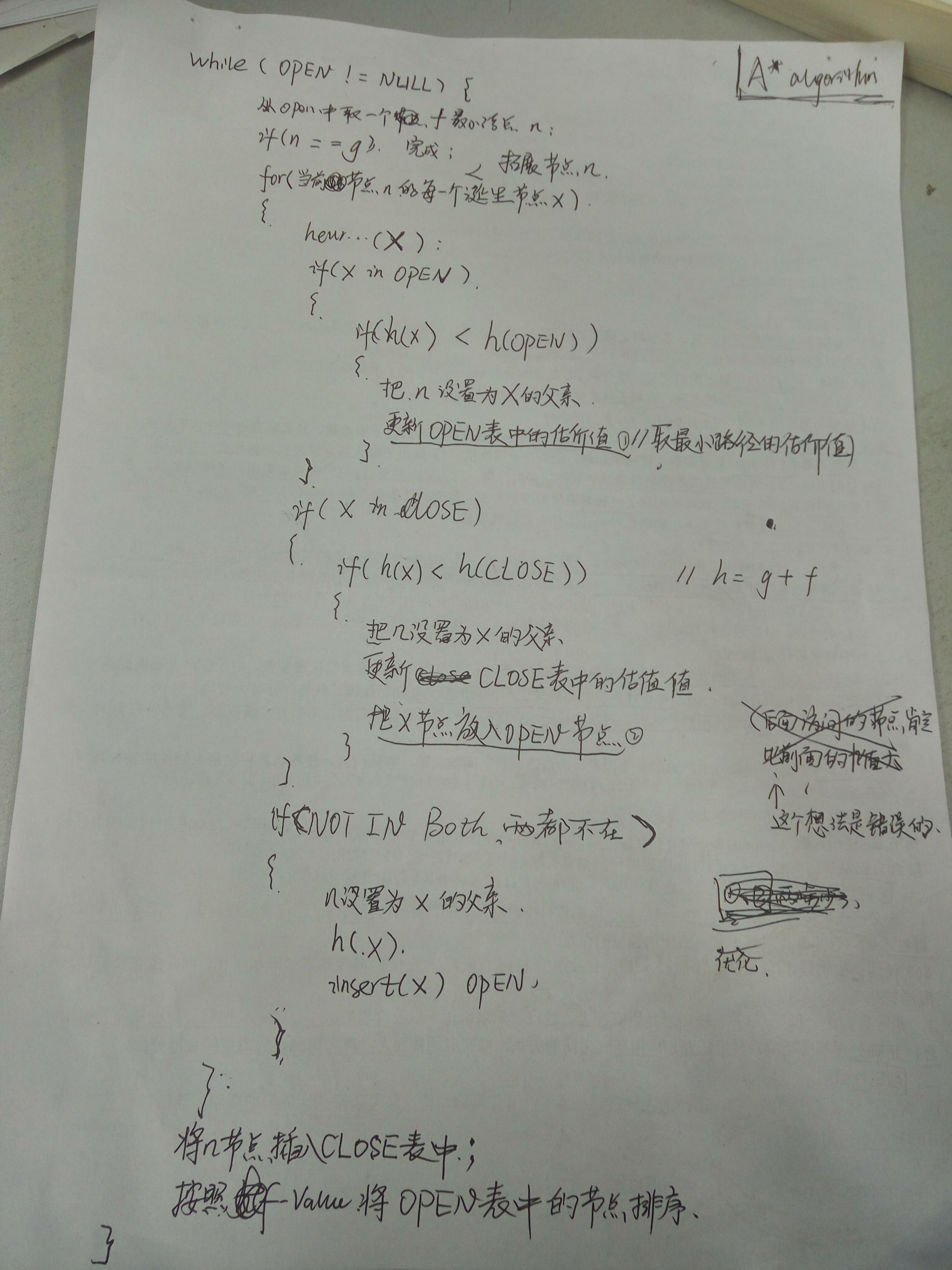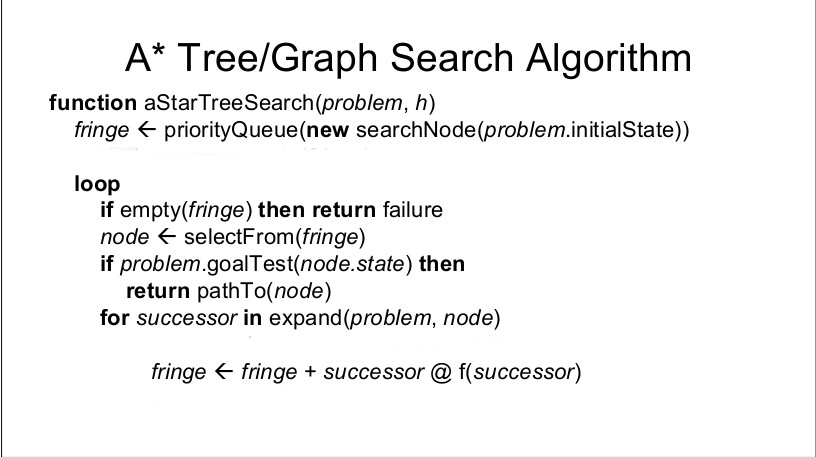A*演算法解決八數碼問題(C++版本)
阿新 • • 發佈:2019-01-25
八數碼問題定義:
八數碼問題也稱為九宮問題。在3×3的棋盤,擺有八個棋子,每個棋子上標有1至8的某一數字,不同棋子上標的數字不相同。棋盤上還有一個空格,與空格相鄰的棋子可以移到空格中。要求解決的問題是:給出一個初始狀態和一個目標狀態,找出一種從初始轉變成目標狀態的移動棋子步數最少的移動步驟。
A*演算法的通用虛擬碼 :
A*演算法解決八數碼問題的關鍵之處:

關鍵之處:
要維護兩個結構:
- open表,存放將要拓展的節點。
- close表,存放已經拓展過的節點。
每次從open表中選擇F值(f = g + h)最小的點進行拓展,對於拓展出的新節點要,如果已經訪問過且此時F值比以前訪問時更優時,要更新close表,並將此節點重新插入到open表中。
實現原始碼:
#include <iostream>
#include <fstream>
#include <vector>
#include <cmath>
#include <list>
//#include "process.cpp";
#define SIZE 3//棋盤的大小 size*size
using namespace std;
/**
*定義方案節點
*/
typedef struct Node
{
vector<int> board;
int rc;
int h;
int g;
int 測試用例
[1 6 4 8 7 0 3 2 5]的輸入可以得到21步的最優解。

